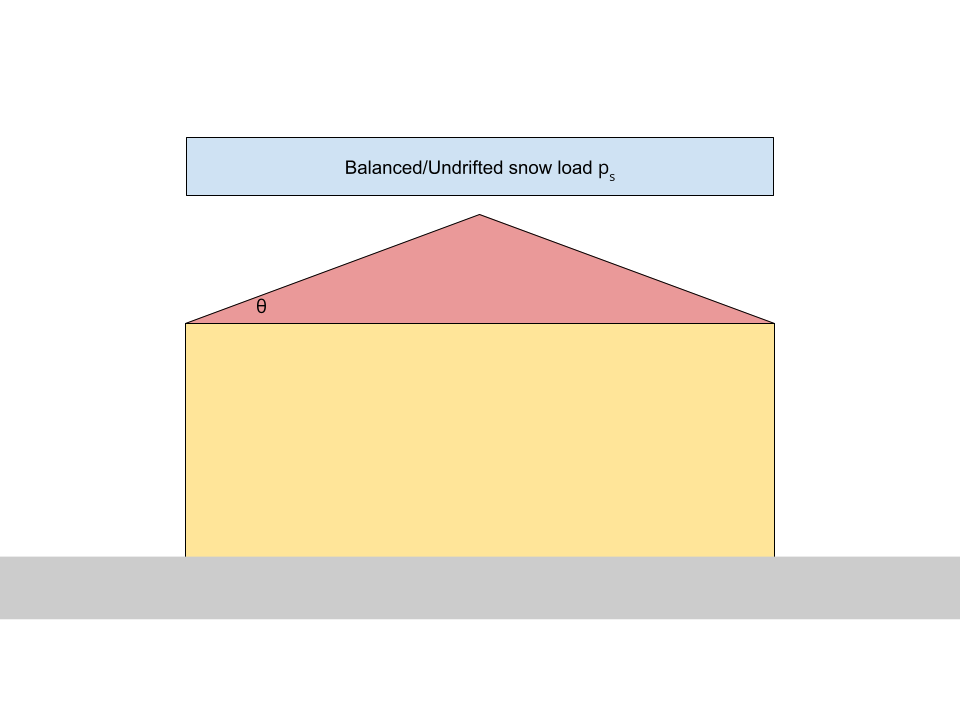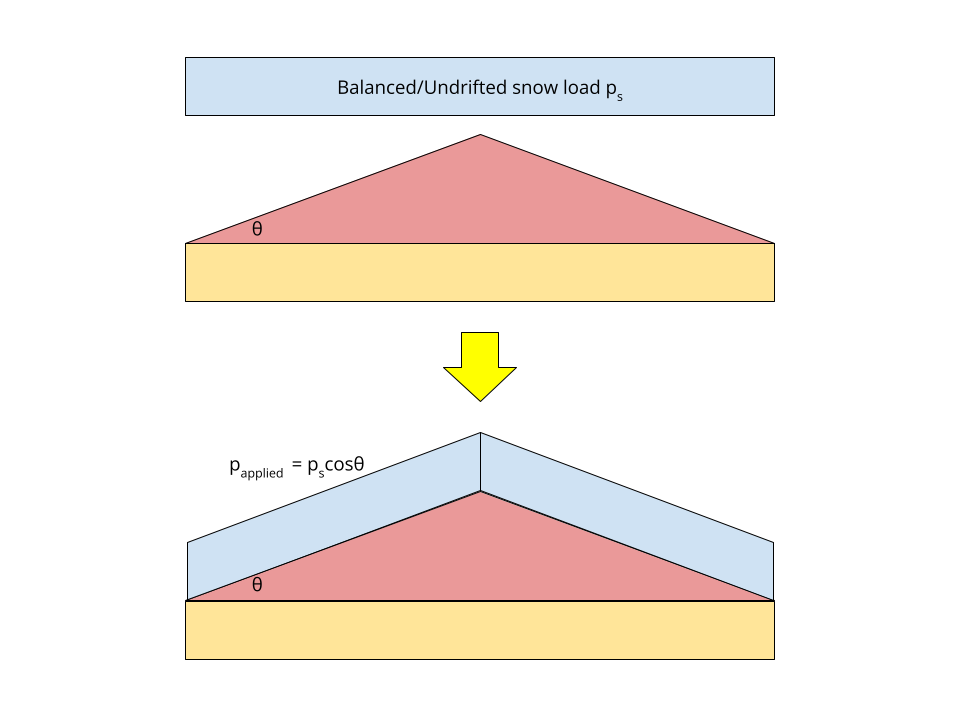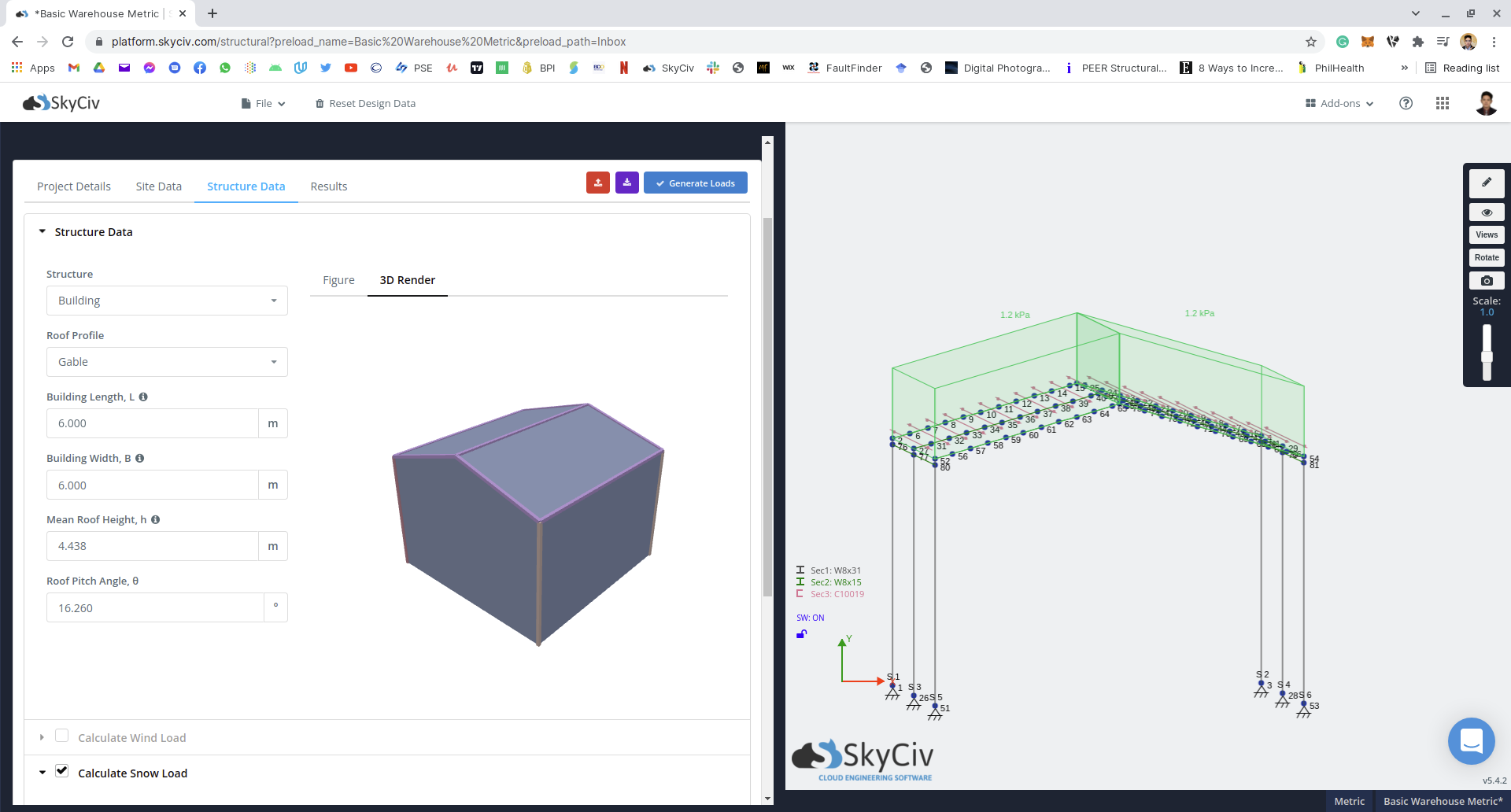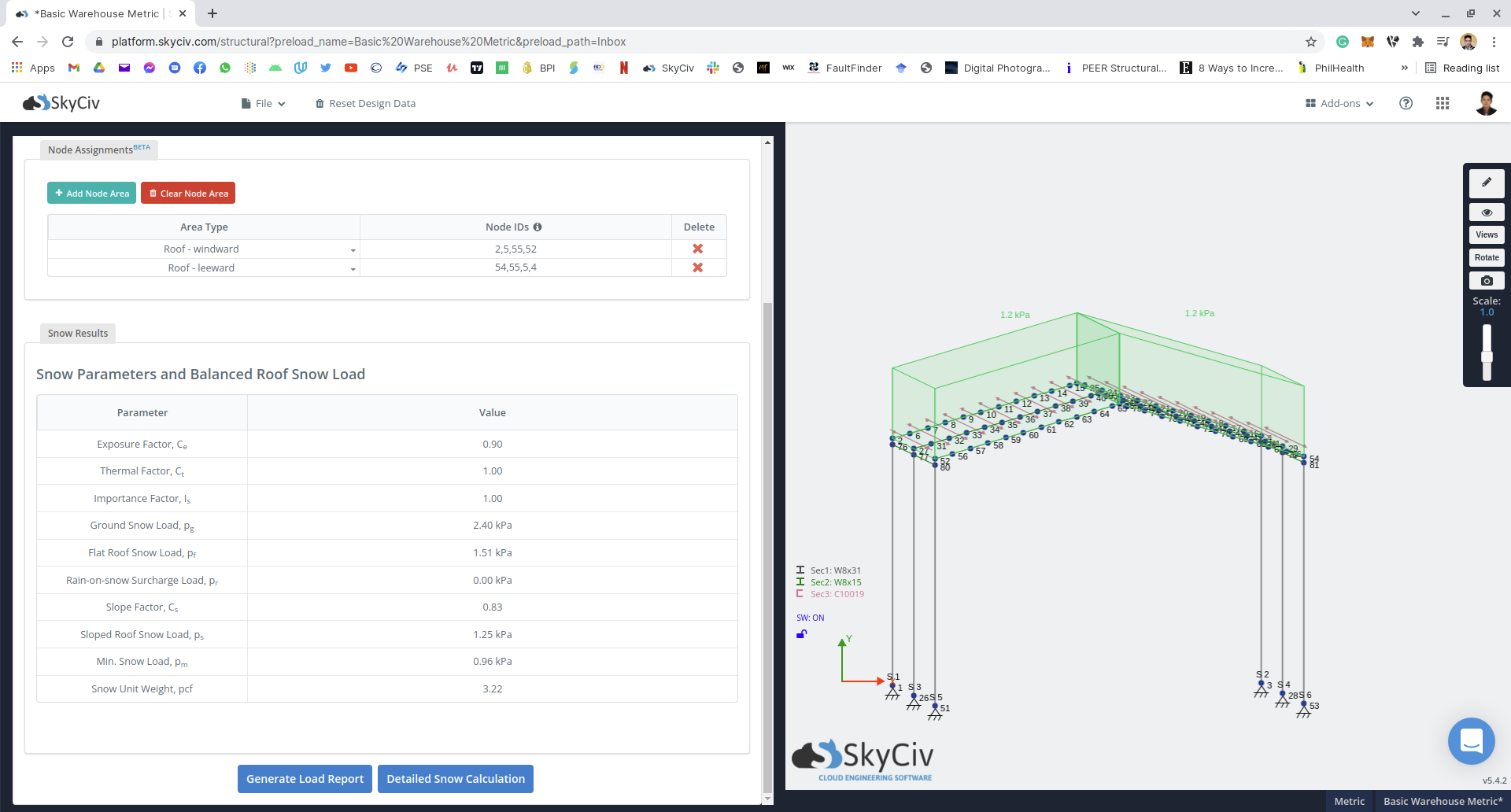Usando el Generador de Cargas para Cargas de Nieve integrado en S3D
Al calcular las cargas de nieve., Siempre se supone que la carga de nieve equilibrada o sin deriva sobre el techo se aplica en la proyección horizontal del área del techo de la misma manera que se aplican las cargas vivas.. 
Para aplicar la carga de nieve en el techo., necesitamos convertir la presión \({Precios}_ _{s}\) multiplicándolo por el valor de cosθ. 
Usando el generador de carga SkyCiv en S3D
Por Usuarios de cuentas profesionales, puede acceder al generador de carga a través de las secciones de carga de área en S3D. Desde el módulo, generar la carga de nieve equilibrada/sin deriva \({Precios}_ _{s}\) se aplica automáticamente siempre que el nodos de barlovento y sotavento del techo se definen el Asignaciones de nodos mesa.

La regla para definir los nodos de barlovento y sotavento del techo se muestra a continuación.:


Por lo tanto, La carga de nieve correspondiente aplicada se muestra a continuación.:

De este modelo, la carga de nieve equilibrada/sin deriva \({Precios}_ _{s} = 1.25 kPa) se convierte multiplicando el valor del coseno del Ángulo de inclinación del techo θ igual a 0.9603. Por lo tanto, la carga de nieve del techo correspondiente es igual a \( p = 1,20 kPa). Usando carga de área abierta, Luego se aplica a la superficie del techo del modelo.. Para el caso desequilibrado/derivado, la entrada manual es necesaria. Esta característica sólo está disponible para ASCE 7-10, ASCE 7-16, NBCC 2015, EN 1991, y AS / NZS 1170.
Ingeniero estructural, Desarrollo de Producto
Maestría en Ingeniería Civil
Referencias:
- Sociedad Americana de Ingenieros Civiles. (2017, junio). Cargas mínimas de diseño y criterios asociados para edificios y otras estructuras.. Sociedad Americana de Ingenieros Civiles.


